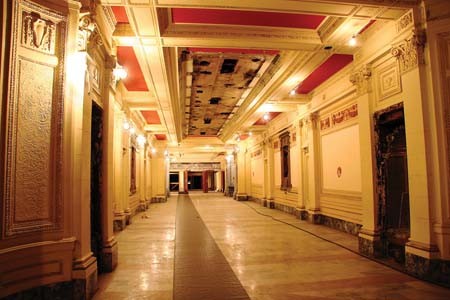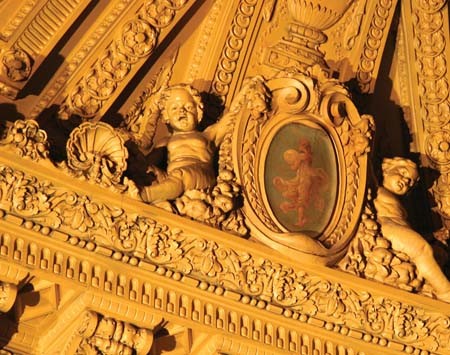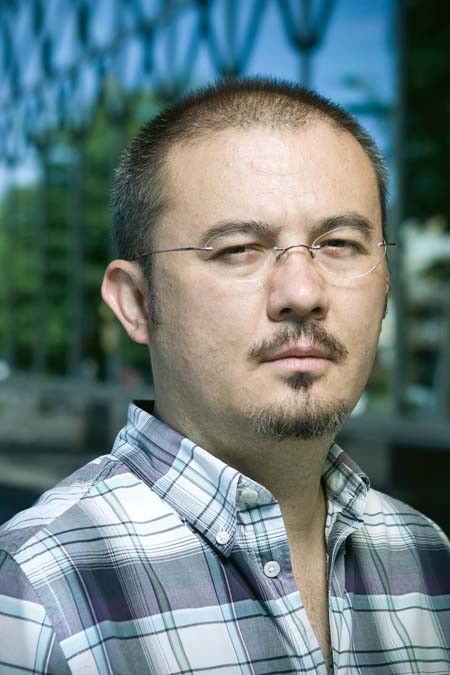Page 3 of 4
|
The house that Sundance Built Becker says, on the contrary, that national-level Broadway advisers have told him Salt Lake City could be a premiere destination if it had the facility. One of Becker’s advisers is his brother Bill Becker, a Tony Award-winning producer who was asked by Ralph to serve as volunteer chairman of the Downtown Theater Action Group. 

|
|
Studies and Processes
For
Becker to fully realize his vision for downtown, he will almost
certainly need to pick up some funding from Salt Lake County. In 2008,
Salt Lake County contracted with AMS Planning & Research to conduct
a study and draft a cultural facilities master plan. Released in
December 2008, the plan looked at the proposals for both a downtown
Performing Arts Center as well as a similar facility located in Sandy.
AMS concluded, “On balance, taking into account the market need, the
program considerations, and the readiness factors, AMS is unable at
this time to advise the County to make a commitment for significant
public funding for either of these projects. However, AMS strongly
recommends that additional information be provided to the County prior
to a decision on support.”

Becker,
however, sees the study as anything but definitive, saying it is more
focused on avoiding the politics between Sandy and Salt Lake City than
determining the need for a large theater. “I would say they remained
neutral,” Becker says.
Sandy
attempted to pursue a Broadwaystyle theater as part of a privately
funded development called the Proscenium, but that project has stalled
due to funding difficulties. When it picks back up, it will focus first
on building the residential component of the facility.
“It’s
still up for debate,” Corroon says of the downtown facility. “We will
look at any project. The process is in place to do that.”
Becker
states, “We see it being a partnership with the county,” but he also
emphasizes that some projects could be joint ventures, while others
could be pursued solely by one party or the other. However, the price
tag on the performing arts center—a cost of $80 million has been tossed
around—would indicate the need to go through the time-consuming
“process” with the county before any funding comes through.
Those
who question the need for the performing arts center also question what
the benefit would be of spending public funds on the facility. “You
have to ask, ‘What are you delivering for them that you’re not already
getting?’” Geilmann says. “Who benefits from spending that $80 million?
Who are the beneficiaries?”
Where do you want to live?
Culture
and arts offerings help people decide if they like a city and want to
live there. Even talking about the arts— more than a city’s politics,
infrastructure, resources, or fiscal policy—reveals how people view
their city and what aspirations they have for it. Corroon points to
Richard Florida’s The Rise of the Creative Class, a book about
professionals in the new “knowledge economy” and what they look for in
a place to live. Florida argues that a thriving gay population and rock
bands are important to a city’s economic development. Corroon gets
this. “It’s larger than just the arts,” he says. “It’s technology,
tourism and economic development.”
As to a performing-arts
center, Mathis says, “The real benefit of this process has been the
recognition that this discussion is much bigger than a single building.
The future might hold a district of some kind, or a cultural trust,
similar to what other cities have developed, or something completely
new that fits Salt Lake City specifically.”
On a more personal
level, Becker has been trying to convince his mother, who was the first
person he called after he found out he won the mayoral race in 2007, to
move from Washington, D.C., to Utah. He recently found an inroad on a
recent visit when the two went to an arts function in Washington. It
was a chance for the mayor to remind her that his city also has
cultural offerings she might enjoy. From a cultural perspective, D.C.
to SLC might not be such a big leap, especially if Becker can get
people to catch his vision.
Geoff Griffin
comments@cityweekly.net
City Weekly Interviews Geralyn Dreyfous of the Salt Lake Film Center & Vasilios Priskos of InterNet Properties on the next page.